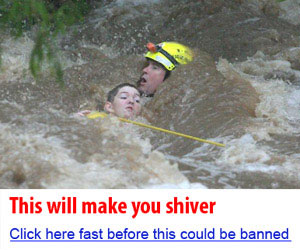City Survival Guide for SHFT – Thriving Amidst Urban Chaos
In the heart of the concrete jungle, survival is a skill not many possess. As the world evolves and challenges emerge, it’s crucial to adapt and prepare for any eventualities.
Welcome to the City Survival Guide for SHFT, your go-to resource for navigating the complexities of urban survival. We’ll delve into the nitty-gritty of securing your essentials, fortifying your home, and ensuring your safety amidst turmoil.
This guide is a comprehensive exploration of survival strategies tailored for the urban dweller. From mastering the art of resource management to understanding the nuances of urban navigation, we’ve got you covered.
Embrace the journey ahead, and remember, survival isn’t just about enduring – it’s about thriving. Join us as we equip you with the knowledge and skills to not just survive, but flourish in the face of adversity.
Where to find water in the city?
In a post-SHTF urban environment, securing a reliable water source is paramount. Public parks often have water fountains, and these can be a valuable resource. However, it’s crucial to have a portable water filter to ensure safety.
The city infrastructure itself can also be a source of water. Many buildings, particularly older ones, have rooftop water tanks. If accessible, they can provide a significant amount of water. But remember, always purify before consumption.
Another option is to collect rainwater. Even in a city, with a bit of ingenuity, you can set up an effective rainwater collection system using tarps, buckets, and other readily available materials.
Additionally, fire hydrants can be a source of water. However, this should only be a last resort as tampering with fire hydrants can be illegal and dangerous.
Water heaters in abandoned buildings can also hold up to 40-60 gallons of water. However, ensure its safety before consumption.
Lastly, don’t overlook man-made water features like fountains and decorative ponds. While not ideal, they can provide water in desperate times.
Remember, in a post-SHTF scenario, finding water is only half the battle. Ensuring its safety for consumption is equally important. Always carry a water purification method when scavenging for water in the city.
How to find food in urban areas?
In an urban survival scenario, knowing where to source food can be a lifesaver. One of the first places you should consider is supermarkets. Although they may be looted in a SHFT situation, there’s often a chance you can still find canned goods and non-perishable items.
Another option is restaurants and fast food establishments. These places typically have a large stock of food and could still have supplies even after they’ve closed. Don’t forget to check their storage areas and freezers.
For those willing to get their hands dirty, dumpster diving can also yield food. Many stores throw out food that’s still edible but past its sell-by date. Remember to use caution and avoid rotten or contaminated food.
In addition, you can also consider urban foraging. Many cities have fruit trees and edible plants growing in parks or even on streets.
- Supermarkets
- Restaurants and fast food establishments
- Dumpster diving
- Urban foraging
Keep in mind that in a survival situation, it’s crucial to be resourceful and flexible. Be open to different sources of food and always prioritize your safety.
What are essential survival tools?
In a city survival scenario, especially during a SHFT (Shit Hits The Fan) event, certain tools can be the difference between life and death. A multi-tool is a versatile item that combines several functions in one compact package, making it a must-have. It usually includes a knife, scissors, can opener, and other useful tools.
A flashlight is another essential tool. It provides light in dark spaces and can be used for signaling in emergencies. Opt for a hand-crank version to avoid the need for batteries.
Water purification tablets are crucial for ensuring safe drinking water. They can kill bacteria and viruses in contaminated water, making it safe to drink.
Fire starters are essential for warmth, cooking, and signaling. Matches, lighters, and ferro rods are all effective options.
A first-aid kit is a non-negotiable item in any survival scenario. It should contain bandages, antiseptic wipes, tweezers, and other medical supplies.
Lastly, a portable solar charger can keep your electronic devices powered up. This can be invaluable for maintaining communication and accessing vital information.
In a city survival situation, these tools can greatly enhance your chances of survival. They are compact, easy to use, and can address a wide range of challenges that may arise during a SHFT event.
How to navigate without GPS?
In the event of a SHTF scenario, your trusty GPS may not be available. This is why traditional navigation skills are key components of any city survival guide. One such skill is the ability to use the sun and stars as your compass. For instance, in the Northern Hemisphere, the sun rises in the east and sets in the west, while the North Star is a reliable indicator of true north.
Another crucial skill is understanding landmarks and their significance in navigation. Landmarks can be natural, like rivers and mountains, or man-made, like buildings and roads. Paying attention to these can help you find your way around an unfamiliar city.
1. Map Reading: In a city, a paper map can be invaluable. It can provide a visual layout of streets, buildings, parks, and other key features. Learning how to read a map and correlate it with the physical environment is a must-have skill.
2. Compass Use: A compass, when used in conjunction with a map, can help you accurately determine your direction.
Remember, practice makes perfect. The more you practice these skills, the more instinctive they become. In a SHTF situation, being able to navigate without GPS could be the difference between life and death.
How to stay safe during a disaster?
When a disaster strikes, it’s crucial to have a disaster preparedness plan in place. This plan should include a clear evacuation route and a safe meeting place for all family members. It’s also important to have a disaster survival kit ready, equipped with essential items such as food, water, first aid supplies, and important documents.
Remember to stay informed about the situation. Utilize communication tools like radios and social media to receive updates about the disaster. It’s equally important to understand the potential hazards in your city. Knowing the risks can help you prepare better and respond quicker.
Building resilience is another key aspect of surviving a disaster. This involves not only physical resilience but also mental and emotional strength. It’s essential to stay calm and composed during a disaster, as panic can lead to poor decision-making.
Consider the following when creating your disaster preparedness plan:
- Identify potential hazards in your city
- Create an evacuation plan
- Prepare a disaster survival kit
- Stay informed about the situation
- Build resilience
Lastly, remember to practice your plan. Regular drills can help you and your family become more familiar with the plan, making it easier to execute if a disaster does occur. It’s not just about surviving the disaster but also recovering from it. Being prepared can go a long way in ensuring your safety and well-being during a disaster.
What are the best places to take shelter?
When it comes to city survival during a SHFT scenario, identifying safe and secure shelter locations is paramount. Concrete structures like underground parking garages are often overlooked but can provide essential protection against harsh weather conditions and potential threats. They’re spacious and usually have multiple exits, which is a key factor in a survival situation.
Another viable option would be abandoned buildings. These structures can provide ample space and resources for survival. However, it’s crucial to assess the building’s stability and potential hazards before settling in.
• Subways and tunnels can also serve as excellent shelters. They offer protection from various elements and can also serve as escape routes if necessary.
Large commercial buildings with basements or sub-levels also make for excellent shelters. They’re often equipped with emergency supplies, like first aid kits and fire extinguishers, and can provide a safe haven from potential threats.
Remember, the best shelter location depends on the nature of the SHFT scenario, your personal skills, and the resources available. It’s crucial to stay adaptable and flexible in your decision-making process. Always consider the pros and cons of each potential shelter location to ensure your survival.
How to create a survival plan?
Creating a survival plan in the event of a SHFT (Shit Hits The Fan) scenario in the city requires careful preparation and strategic thinking. The first step is to identify potential risks in your urban environment. This could include natural disasters, power outages, or civil unrest.
Next, create an emergency kit that includes essential items such as water, food, first aid supplies, and necessary medications. Remember, the goal is to be self-sufficient for at least 72 hours.
Another vital component of your survival plan should be establishing a communication plan. In an emergency, standard communication channels may be disrupted, so having alternative means of staying in touch with loved ones is crucial.
One of the most critical aspects of city survival is knowing your surroundings. Familiarize yourself with the city’s layout, potential safe zones, and hazardous areas.
Emergency evacuation plans are a must. Determine at least two different routes out of the city, taking into account potential roadblocks or traffic congestion.
Lastly, consider your physical and mental preparedness. Regular exercise, survival skills training, and stress management techniques can significantly improve your chances of surviving a SHFT scenario.
Remember, a well-thought-out plan can be the difference between chaos and survival. So, start planning today and stay prepared for any city survival scenario.
What are ways to signal for help?
In an urban survival situation, signaling for help can be crucial. One of the most effective ways is using light as a beacon. This can be achieved with a flashlight or even a cell phone screen. It’s important to remember the universal SOS signal: three short flashes, three long flashes, and three short flashes again.
Another way to signal for help is by making noise. Car alarms, horns, or even banging pots and pans together can attract attention. You can also use the SOS signal in this method, with three short bursts of noise, three long ones, and three short ones again.
If you’re trapped in a building, try to make a visible sign in a window or on a rooftop. This could be a piece of cloth or a written message.
- Light signals
- Noise signals
- Visible signs
In a city environment, you can also use technology to your advantage. Try to find a working phone or internet connection to contact authorities or loved ones. Remember, in a survival situation, getting the attention of others could be your key to survival.
Always remember to stay calm, assess your situation, and use whatever resources you have at hand to signal for help. Whether you’re trapped in a building, lost in the city, or facing a disaster, these methods can save your life.
Wrapping Up: City Survival Guide for SHFT
In conclusion, our comprehensive guide has provided you with key insights into surviving in an urban environment during a SHFT scenario. We’ve delved into the importance of knowing where to find water and food in a city, as these resources are critical for survival. We’ve also highlighted the significance of essential survival tools and how they can make a difference in such situations.
Moreover, we’ve discussed the importance of being able to navigate without GPS, as well as how to stay safe during a disaster. Shelter is another crucial aspect, and we’ve explored the best places to take refuge in a city during a crisis. The creation of a survival plan is a vital step, and we’ve given you the tools to do so effectively.
Lastly, we’ve covered ways to signal for help, which can be lifesaving in a SHFT situation. As cities continue to evolve and technology advances, these survival strategies may also adapt. Always stay informed and prepared. Remember, knowledge is power, and in a survival situation, it could be the key to your survival.



